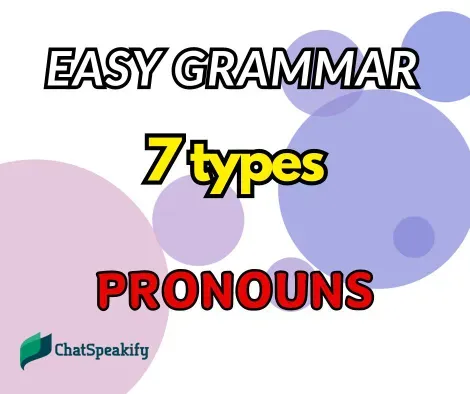Understanding pronouns is essential for effective communication in English. Pronouns replace nouns to avoid repetition and add clarity to sentences. Here’s a comprehensive guide to the seven types of English pronouns:
1. Personal Pronouns
Personal pronouns refer to specific persons or things. They include:
-
Subject Pronouns: Used as the subject of a sentence. Examples: I, you, he, she, it, we, they.
- Example: He is my brother.
-
Object Pronouns: Used as the object of a verb or preposition. Examples: me, you, him, her, it, us, them.
- Example: Sarah gave it to me.
-
Possessive Pronouns: Indicate ownership or possession. Examples: mine, yours, his, hers, its, ours, theirs.
- Example: The car is mine.
2. Demonstrative Pronouns
Demonstrative pronouns point to specific things or people. Examples: this, that, these, those.
- Example: These are the books I borrowed.
3. Interrogative Pronouns
Interrogative pronouns ask questions. Examples: who, whom, whose, what, which.
- Example: Who is coming to the party?
4. Relative Pronouns
Relative pronouns introduce relative clauses. Examples: who, whom, whose, which, that.
- Example: The car that I bought is red.
5. Reflexive Pronouns
Reflexive pronouns refer back to the subject and are used for emphasis or to indicate that someone did something to themselves. Examples: myself, yourself, himself, herself, itself, ourselves, yourselves, themselves.
- Example: He hurt himself.
6. Indefinite Pronouns
Indefinite pronouns refer to nonspecific persons or things. Examples: everyone, nobody, something, anything, all, none, some, any.
- Example: Everybody enjoyed the party.
7. Reciprocal Pronouns
Reciprocal pronouns indicate mutual action or relationship. Example: each other, one another.
- Example: They love each other.
This guide covers the basics of English pronouns, helping you understand their types and usage in everyday communication. Mastering pronouns enhances your ability to express ideas clearly and succinctly in both spoken and written English.
